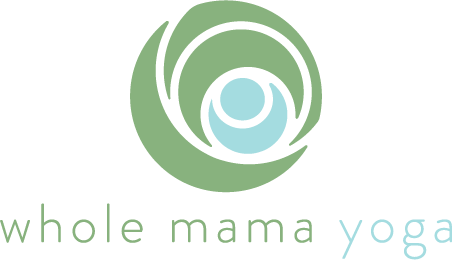Keep it Simple: Breath
“Breathing, however, has other functions apart from the ventilation of air and the maintenance of oxygen and carbon dioxide. Breathing affects motor control and postural stability and plays several roles in physiological and psychological regulation.”
Rosabla, Courtney. 2009. The functions of breathing and its dysfunctions and their relationship to breathing therapy. International Journal of Osteopathic Medicine. 78-85
Breathing isn’t as sexy-looking as the splits, or as bad-ass as an arm balance. But breathing is the foundation of your entire system- if you didn’t breathe, you would be dead.
Breath doesn’t just keep you alive, though.
✨ Your breath helps you maintain a healthy pelvic floor. A healthy pelvic floor prevents you from leaking pee, poop and gas, and helps sex feel good. Your pelvic floor also helps stabilize your spine and ribs, which is important for a strong core. Pretty important, right?
✨ Your breath helps regulate pressure within your abdominal cavity. Poor pressure regulation can lead to hernias, abdominal separation (DR), prolapse and back pain.
✨ Your breath promotes good rib cage mobility. Poor rib cage mobility can lead to upper back, neck and shoulder pain.
✨ Your breath also helps regulate your stress. Deep breathing activates your parasympathetic nervous system- your “rest and digest” mode. That’s the opposite of fight or flight.
Unfortunately, lots of us get stuck in shallow or reverse breathing patterns as we grow from children to adults. This can be due to posture, or things like constantly sucking in your stomach. But pregnancy (which changes your ribs and diaphragm) is also a culprit.
When you breathe in, your rib cage should expand forward, out and back. In other words, the whole circumference of your ribs should expand. Your shoulders should stay still, and your belly should gently expand with the movement of your ribs.
As you exhale, your belly should soften, and your ribs should gently draw together and down. Your shoulders should stay still.
In a reverse breathing pattern, your belly draws up and in as you inhale, and balloons out as you exhale. This puts a lot of pressure on your pelvic floor because it increases abdominal pressure.
In a shallow breathing pattern, you will feel your shoulders moving up and down, with very little movement from the ribs. This ALSO puts a lot of pressure on your pelvic floor and reduces rib cage mobility (hello neck, upper back and shoulder pain).
If you're stuck in one of these breathing patterns, don’t worry. It’s normal, especially after pregnancy. The good news is that you can retrain your breath.
Here are two of my favorite ways to learn breathing with good rib cage movement:
Side Lying Breath, 3 times per week for 2-3 minutes
Back Body Breath, 5 breaths every day
Side Lying Breath, 3 times per week for 2-3 minutes
Lie down on your left side. Place a yoga block (lowest height) or a small pillow under your head. Take 1-2 folded blankets under your left side. The blankets should be underneath your left ribs and waist.
Line the back of your skull up with your back ribs and the back of your pelvis. Stack your right shoulder on top of your left.
Place your right hand on your right bottom ribs. As you inhale, breathe into your right hand. As you exhale, allow your right ribs to soften away from your hand.
Keep going. The longer you stick with it, the more you will find your breath moving down and up into your hand. I recommend doing this 2-3 minutes on each side about 3 times per week.
Back Body Breath, 5 breaths every day
Find a thick blanket or towel. Roll it up into a big, fat roll. If your blankets or towel are thin, you can roll a second blanket or towel around the first roll.
Come into a kneeling position, sitting back on your shins. Your knees should be pointing forward, not out to the sides.
Push the blanket roll up against your belly. Hold the edges of the blanket roll in your hands to keep the blanket in place.
Fold your upper body over the blanket, allowing your spine to round. If your forehead doesn’t touch the ground, that is okay. You can let it float, or put a block, blanket or pillow under your head.
Take five deep breaths into your back. Then, release.
This can be very helpful for back tightness!
This won’t change overnight. It takes time, consistency and patience. But I promise, your pelvic floor, ribs, shoulders, neck, upper back, low back and brain will all thank you in the end.
It’s not as sexy-looking as a handstand, but peeing your pants isn’t very sexy, either.


